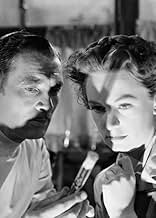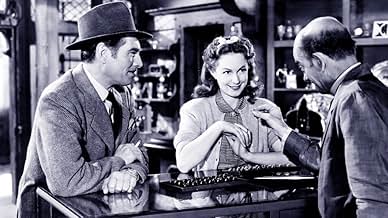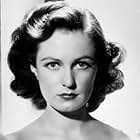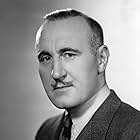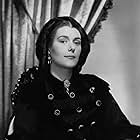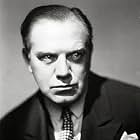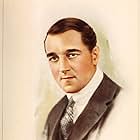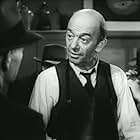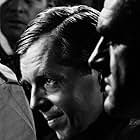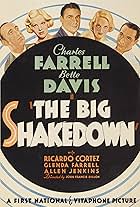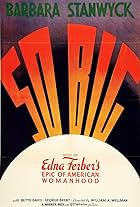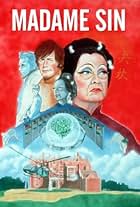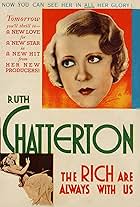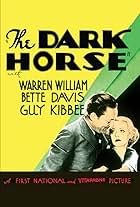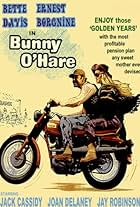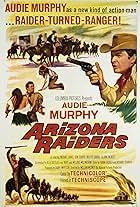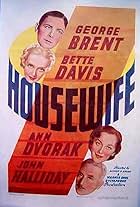In a Scottish sanitarium, a brilliant research psychiatrist works on a treatment for dementia precox. He falls for his altruistic female lab assistant and they begin a passionate, tragic rel... Read allIn a Scottish sanitarium, a brilliant research psychiatrist works on a treatment for dementia precox. He falls for his altruistic female lab assistant and they begin a passionate, tragic relationship.In a Scottish sanitarium, a brilliant research psychiatrist works on a treatment for dementia precox. He falls for his altruistic female lab assistant and they begin a passionate, tragic relationship.
- Awards
- 1 win
G.P. Huntley
- Dr. Thornton
- (as George P. Huntley Jr.)
Rudolph Anders
- Police Officer Exiling Paul
- (uncredited)
Storyline
Did you know
- TriviaAfter the success of The Letter (1940). actor James Stephenson was promoted to star for this picture. Actor Irving Rapper was promoted to director on the project. According to Bette Davis in the biography 'Mother Goddam,' "I disguised myself as a nurse and appeared on the set as an extra. Rapper didn't recognize me for the first few takes. I had a ball. Imagine daring to do this today!"
- SoundtracksThe Bonnie Banks O' Loch Lomond
(ca 1745) (uncredited)
Traditional Scottish tune
Incorporated into the score often during the Scottish scenes
Featured review
James Stephenson's last film in a short movie career was "Shining Victory," a very good B movie from Warner Brothers that costarred Geraldine Fitzgerald, Donald Crisp, and Barbara O'Neill. Stephenson plays Paul Venner, a brilliant scientist who is basically run out of Budapest after a noted doctor steals his work and has no intention of being found out. It's odd in a way because you think the story will concern this, but it's actually peripheral. He winds up in a small Scottish sanitarium where he will be allowed to recreate his original work - trying to find a cure for dementia precox, a disease his father had. He is assigned a young, pretty assistant, Mary (Fitzgerald) whom he has no patience with, but he soon finds she is indispensable.
Given the character played by Barbara O'Neill, who is a secretary, Miss Leeming, and an incident that takes place in the movie, one senses that "Rebecca" was very much on everyone's minds. Where Mrs. Danvers is a cold fish and a soul of efficiency as her sinister agenda unfolds, Miss Leeming's shellshocked stare and muttered comments give evidence that she's definitely in the wrong part of the hospital the minute the viewer sees her. In one scene, she confides to Dr. Veneer that her sister can't sleep though she's on sedatives. "Is she married?" he asks. "No," she answers." "Tell her to drop the sedatives and get a husband," he says. Yeah, it's 1941 all right.
And that's really the major problem with "Shining Victory." Its main character, Veneer, is not very likable. In fact, he's downright nasty. The character undergoes a change, but instead of it showing here and there as the movie progresses, it's overnight, making him hard to warm up to until a really beautiful scene at the end. The last fifteen minutes of this film are actually the best part - there's a truly unexpected scene that dictates the rest of the film.
Geraldine Fitzgerald is lovely and gentle in her role as Mary and for me, her performance elevates "Shining Victory." Stephenson is credited with one more film in 1941, the year of his death at age 53, after only a four-year career in cinema that was preceded by years in theater.
One more thing - years ago, I saw a photo of Bette Davis dressed as a nurse and apparently, she appeared in this film as a joke on the director, Irving Rapper. Though I was aware of this and watched for her, I couldn't find her.
Given the character played by Barbara O'Neill, who is a secretary, Miss Leeming, and an incident that takes place in the movie, one senses that "Rebecca" was very much on everyone's minds. Where Mrs. Danvers is a cold fish and a soul of efficiency as her sinister agenda unfolds, Miss Leeming's shellshocked stare and muttered comments give evidence that she's definitely in the wrong part of the hospital the minute the viewer sees her. In one scene, she confides to Dr. Veneer that her sister can't sleep though she's on sedatives. "Is she married?" he asks. "No," she answers." "Tell her to drop the sedatives and get a husband," he says. Yeah, it's 1941 all right.
And that's really the major problem with "Shining Victory." Its main character, Veneer, is not very likable. In fact, he's downright nasty. The character undergoes a change, but instead of it showing here and there as the movie progresses, it's overnight, making him hard to warm up to until a really beautiful scene at the end. The last fifteen minutes of this film are actually the best part - there's a truly unexpected scene that dictates the rest of the film.
Geraldine Fitzgerald is lovely and gentle in her role as Mary and for me, her performance elevates "Shining Victory." Stephenson is credited with one more film in 1941, the year of his death at age 53, after only a four-year career in cinema that was preceded by years in theater.
One more thing - years ago, I saw a photo of Bette Davis dressed as a nurse and apparently, she appeared in this film as a joke on the director, Irving Rapper. Though I was aware of this and watched for her, I couldn't find her.
Details
- Runtime1 hour 20 minutes
- Color
- Aspect ratio
- 1.37 : 1
Contribute to this page
Suggest an edit or add missing content



